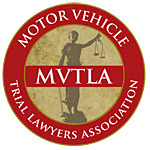A topic that frequently is addressed in a civil personal injury jury trial is the plaintiff's right to full compensation for personal injuries where the plaintiff has a preexisting condition but the condition was not symptomatic at the time the plaintiff was injured. In your typical car accident neck and back injury tort case, the majority of plaintiff's have some form of a preexisting degenerative condition to either the cervical spine or low back. After all, as we age our bodies degenerate. A well-known Connecticut neurosurgeon once reminded me in a medical/legal consultation that everyone over the age of 35 has some form of a degenerative spine wear and tear either at the neck, low back or thoracic region. From a damage perpective in a civil jury trial, the question becomes how does the Connecticut civil jury tort system handle the issue of damages for an injured neck or back when the plaintiff had a preexisting asymptomatic dormant dgenerative neck or back?
The answer is very simple. When a plaintiff has a preexisting arthritic medical condition that is dormant, asymptomatic and without preexisting pain, the plaintiff is entitled to full compensation, full recovery and full damages.
Where a plaintiff has a preexisting disability that is made worse by the injury at issue, the plaintiff can recover only to the extent of the personal injury aggravation.
Often an IME or more properly stated a DME ( Defendant's Medical Exam) doctor will try to apportion a plaintiff's personal injury where a scan, x-ray or objective test notes preexisting arthritis or degeneration at the body part at issue in the case. This testimony would be objectionable where the preexisting condition was not symptomatic at the time of the plaintiff's injury as supported in the record.
Where the defense counsel tries to propound this type of evidence at trial, the plaintiff's counsel should object. An authoritive case on this in Connecticut is Tuite v Stop and Shop Companies, Inc. 45 Conn. App. 305 (1997). The case makes it clear that trying to apportion, attribute or divide a plaintiff's disability with a preexisting asymptomatic condition is not relevant in the case and therefore, objectionable. The case basically applied The Second Restatement of Torts Section 433 A. comment e, illustration 8 (1965) by way of footnote.
All in all, it becomes important for the personal injury plaintiff's attorney to flush out from the client whether the client had a symptomatic preexisting condition or whether that preexisting condition was asymptomatic when the plaintiff was injured. The difference in case value may be significant for the plaintiff. Even if a case does not proceed to trial, this noted rule should be advocated by the plaintiff's personal injury attorney either in the context of settlement negotiations with an insurance carrier, at a pretrial conference,a mediation or at a binding arbitration. The plaintiff's attorney needs to be on guard of any tactic at trial or by way of a Defense Medical Examination Report that attempts the above noted apportionment trial tactic .
I hope this blog has been interesting. The Rotatori Law Firm handles many neck and back personal injury accident cases for clients injured in Stamford, Watertown, Middlebury, Naugatuck, Waterbury, Wolcott, Prospect, Beacon Falls, Woodbridge, New Haven and Southbury, Connecticut. These personal injuries may result from a car accident case, premises liability case, truck accident or product liability case.




